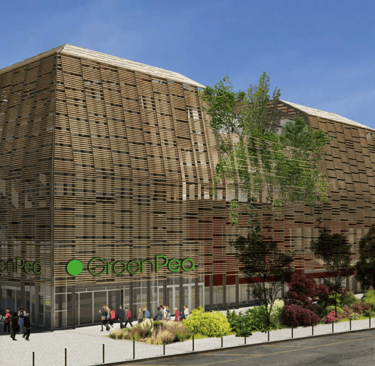Indoor Environmental Quality Around the World: Italy’s Architectural Heritage Meets Sustainable Indoor Well-Being
6/12/20253 min read


Italy, a country celebrated for its architectural legacy, is embracing a modern green transformation that marries historic preservation with sustainability and human-centered design. As Italy works to meet the European Union’s 2030 and 2050 climate goals, Indoor Environmental Quality (IEQ) is emerging as a vital aspect of building performance and cultural continuity. With ancient cities, seismic zones, and diverse climate regions, Italy’s approach to IEQ reflects a nuanced balance of innovation, health, and heritage.
The Rise of Green Building in Italy
Italy’s sustainable construction movement is guided by both EU directives and national initiatives. The National Energy and Climate Plan (NECP) and the Superbonus 110% incentive—launched in 2020—have spurred widespread retrofits in residential and public buildings, particularly improving insulation, ventilation, and energy systems that directly impact IEQ.
Green building certification systems like Protocollo ITACA and LEED Italia assess projects on criteria including thermal comfort, air quality, daylighting, and acoustic performance. Italy’s public procurement policies increasingly favor buildings with high sustainability and health scores.
Protocollo ITACA and IEQ Performance
Protocollo ITACA, developed through collaboration between Italian regions and universities, aligns with European standards while accounting for local climate and cultural contexts. The protocol includes:
Thermal Comfort: Evaluated through building envelope performance and adaptive systems.
Indoor Air Quality: Includes natural ventilation requirements and emissions from interior finishes.
Visual Comfort: Emphasizes daylight autonomy, glare control, and window-to-wall ratios.
Acoustics: Assessed through room use, insulation materials, and ambient noise.
Projects are scored on lifecycle sustainability, and IEQ is weighted heavily in education, healthcare, and public housing assessments.
Impact on Indoor Environmental Quality
Studies from the Politecnico di Milano and ENEA (Italian National Agency for New Technologies, Energy and Sustainable Economic Development) show that IEQ-focused retrofits can reduce indoor pollutant concentrations by up to 45% and improve thermal comfort metrics by over 30% in older buildings.
In classrooms and elderly care homes, improvements in natural lighting and acoustic control have led to better occupant satisfaction and measurable reductions in stress and absenteeism.
Pilot projects in Naples and Turin using natural materials (e.g., cork insulation, lime plaster) and hybrid ventilation systems have further demonstrated health gains without sacrificing architectural integrity.
Leading Projects and Innovations
Green Pea (Turin): A five-story eco-retail and office complex showcasing renewable energy, natural ventilation, and zero-emission construction. It is both LEED and Protocollo ITACA certified.
Palazzo Italia (Milan EXPO): A net-zero pavilion now repurposed as an innovation hub, featuring photo-catalytic façade materials, adaptive lighting, and passive cooling.
Scuola Media ‘G. Pascoli’ (Florence): A public school renovation project implementing daylight-optimized design, operable windows, and low-emission interior finishes.
Human Technopole (Milan): Italy’s life sciences hub integrates circadian lighting, biosensor air monitoring, and wellness-oriented interior layouts in research facilities.
These examples underscore Italy’s commitment to merging environmental design with human comfort in both new and existing structures.
Looking Ahead: The Next Decade
By 2035, Italy aims to expand its IEQ integration across all building sectors. Updates to national building codes will further define minimum performance criteria for air quality, thermal regulation, and post-occupancy feedback mechanisms.
The country’s historic preservation efforts will increasingly use green retrofitting strategies—ensuring that iconic buildings remain not only culturally vibrant but also health-supportive.
In addition, initiatives like the Piano Nazionale di Ripresa e Resilienza (PNRR) will allocate funding toward school and hospital retrofits that prioritize indoor wellness, resilience, and climate mitigation.
Conclusion
Italy’s sustainable building journey is a convergence of past and future. By embedding Indoor Environmental Quality into architectural innovation and policy, Italy is creating healthier, smarter, and more emotionally resonant spaces. Its holistic approach—rooted in both tradition and scientific rigor—serves as a model for how heritage-rich countries can lead the charge toward sustainable, people-first environments.
References
Protocollo ITACA – National Evaluation System. Link
Superbonus 110% – Italy’s Energy Retrofit Incentive. Link
ENEA – Indoor Environment Research Reports. Link
Politecnico di Milano – Building Physics Research. Link
Green Pea Project – Sustainable Retail. Link
Palazzo Italia Expo – Retrofit and Sustainability Profile. Link
PNRR – Italy’s National Recovery and Resilience Plan. Link
